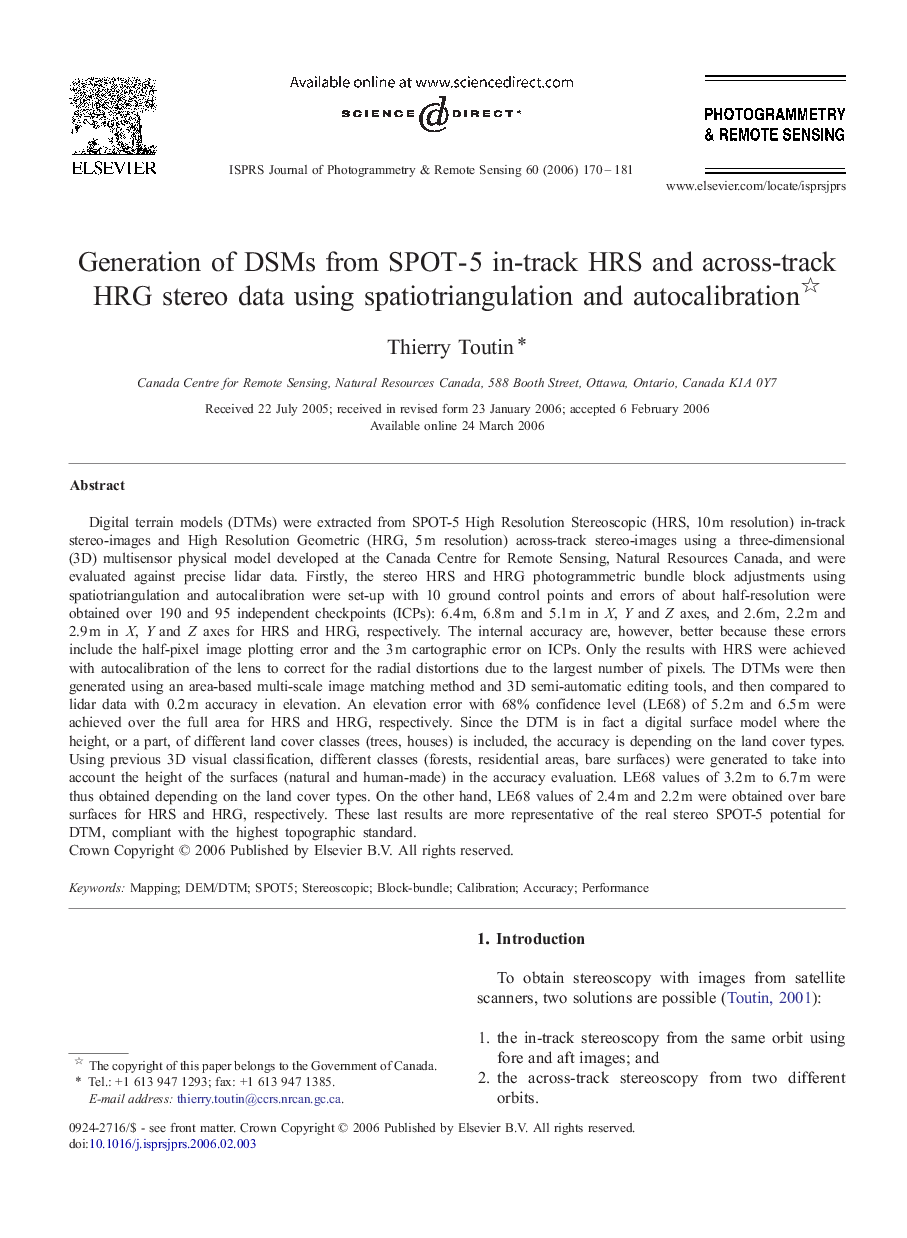| کد مقاله | کد نشریه | سال انتشار | مقاله انگلیسی | نسخه تمام متن |
|---|---|---|---|---|
| 556191 | 1451347 | 2006 | 12 صفحه PDF | دانلود رایگان |

Digital terrain models (DTMs) were extracted from SPOT-5 High Resolution Stereoscopic (HRS, 10 m resolution) in-track stereo-images and High Resolution Geometric (HRG, 5 m resolution) across-track stereo-images using a three-dimensional (3D) multisensor physical model developed at the Canada Centre for Remote Sensing, Natural Resources Canada, and were evaluated against precise lidar data. Firstly, the stereo HRS and HRG photogrammetric bundle block adjustments using spatiotriangulation and autocalibration were set-up with 10 ground control points and errors of about half-resolution were obtained over 190 and 95 independent checkpoints (ICPs): 6.4 m, 6.8 m and 5.1 m in X, Y and Z axes, and 2.6 m, 2.2 m and 2.9 m in X, Y and Z axes for HRS and HRG, respectively. The internal accuracy are, however, better because these errors include the half-pixel image plotting error and the 3 m cartographic error on ICPs. Only the results with HRS were achieved with autocalibration of the lens to correct for the radial distortions due to the largest number of pixels. The DTMs were then generated using an area-based multi-scale image matching method and 3D semi-automatic editing tools, and then compared to lidar data with 0.2 m accuracy in elevation. An elevation error with 68% confidence level (LE68) of 5.2 m and 6.5 m were achieved over the full area for HRS and HRG, respectively. Since the DTM is in fact a digital surface model where the height, or a part, of different land cover classes (trees, houses) is included, the accuracy is depending on the land cover types. Using previous 3D visual classification, different classes (forests, residential areas, bare surfaces) were generated to take into account the height of the surfaces (natural and human-made) in the accuracy evaluation. LE68 values of 3.2 m to 6.7 m were thus obtained depending on the land cover types. On the other hand, LE68 values of 2.4 m and 2.2 m were obtained over bare surfaces for HRS and HRG, respectively. These last results are more representative of the real stereo SPOT-5 potential for DTM, compliant with the highest topographic standard.
Journal: ISPRS Journal of Photogrammetry and Remote Sensing - Volume 60, Issue 3, May 2006, Pages 170–181